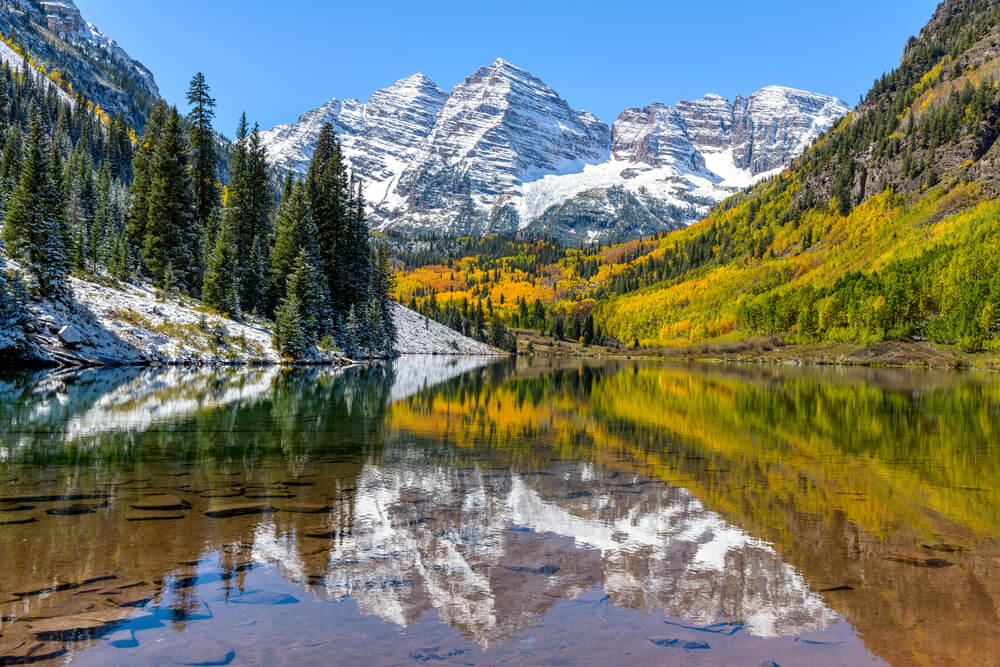Where you spend your retirement years is an important decision and while it’s important to be near family or somewhere with great weather, there are some other considerations to make.
Financial security and good health care arguably become more important the older you get, and some parts of the country are better suited for retirees wanting more independence.
The team at 24/7 Wall St. has ranked the 50 states in order of best to worst using data from the Centers for Disease Control and Prevention, along with the U.S. Census Bureau, to create an index that compares factors in many different categories including environment, income, health, access and education.
Income is hugely important in retirement because most retirees rely on whatever they’ve saved along with Social Security and other retirement benefits to make it through their golden years. Saving for retirement is tough, and a look at 2016 Census data shows that 26.8% of people age 65 to 75 were still in the workforce.
Health is another major contributor to this study, and states with a greater number of older residents that had personal doctors ranked higher in the metric for overall quality of life. Those states typically have healthier populations in general, according to the study.
So without further ado, let’s look at some of the best (and worst) states ranked by quality of life, per 24/7 Wall St.
States With Worst Quality of Life for Retirement
50. West Virginia
- Life expectancy at age 65: 82.5 years (tied – the lowest)
- 65 and older poverty rate: 10% (14th highest)
- 65 and older pop. with a disability: 41.2% (3rd highest)
- Median income for 65 and older households: $36,147 (the lowest)
- Population 65 and older: 361,216 (20% – 3rd highest)
Health issues for older generations are the main reason for West Virginia to rank so low on the quality of life scale. According to the study, 40% of West Virginians age 65 and up have a disability. The state also has the second lowest life expectancy, tied with Kentucky.
Education is also important because it is tied to empowerment, and West Virginia’s retirees are the least likely in the entire nation to have a bachelor’s degree.
49. Arkansas
- Life expectancy at age 65: 82.9 years (tied – 6th lowest)
- 65 and older poverty rate: 10.2% (tied – 11th highest)
- 65 and older pop. with a disability: 41.9% (2nd highest)
- Median income for 65 and older households: $37,762 (4th lowest)
- Population 65 and older: 507,676 (16.8% – 22nd highest)
Arkansas’ limited public transportation hurts its quality of life for seniors as people try to stay more independent while dealing with ailments that may affect their ability to drive. Only 0.5% of Arkansas’ workforce uses public transportation, compared to the 5% national average.
The state also has a low life expectancy at 65, and a high disability rate of people age 65 and older.
48. Mississippi
- Life expectancy at age 65: 82.6 years (3rd lowest)
- 65 and older poverty rate: 12.4% (tied – 2nd highest)
- 65 and older pop. with a disability: 39.6% (6th highest)
- Median income for 65 and older households: $36,415 (3rd lowest)
- Population 65 and older: 474,423 (15.9% – 19th lowest)
Retirement-age income, health and education hurt Mississippi the most, and the state has the third-lowest life expectancy after 65. Access to health care for older generations is also low with more than one in four seniors not having a personal doctor or provider.
States With Best Quality of Life for Retirement
5. Connecticut
- Life expectancy at age 65: 85.4 years (4th highest)
- 65 and older poverty rate: 7.9% (tied – 16th lowest)
- 65 and older pop. with a disability: 29.4% (the lowest)
- Median income for 65 and older households: $54,629 (5th highest)
- Population 65 and older: 613,147 (17.2% – 16th highest)
If you want to talk healthy retirees, look no further than Connecticut. Life expectancy is among the best, and its the only state where less than 30% of retirees have a disability. Median household income is also strong for those aged 65 and older.
4. New Hampshire
- Life expectancy at age 65: 84.2 years (tied – 24th lowest)
- 65 and older poverty rate: 5.5% (the lowest)
- 65 and older pop. with a disability: 30.5% (3rd lowest)
- Median income for 65 and older households: $50,240 (12th highest)
- Population 65 and older: 245,156 (18.1% – 9th highest)
New Hampshire has some of the lowest crime rates in the country, and only 5.5% of the retired population lives below the poverty line. Access to health care is also great, with only 13.8% of seniors claiming to not have a personal doctor or provider.
3. Hawaii
- Life expectancy at age 65: 86.5 years (the highest)
- 65 and older poverty rate: 6.5% (4th lowest)
- 65 and older pop. with a disability: 31.7% (13th lowest)
- Median income for 65 and older households: $65,078 (the highest)
- Population 65 and older: 261,467 (18.4% – 7th highest)
I think we would all love to retire in Hawaii, and while it is on the expensive side, it seems like you get what you pay for. Life expectancy is highest among the 50 states at an impressive 86.5 years, which is a full two years above the national average.
The cost of living is apparent, though, with Hawaii also rocking the highest median household income of just over $65,000. That’s a full $20,000 above the national median.
2. Maryland
- Life expectancy at age 65: 84.6 years (tied – 15th highest)
- 65 and older poverty rate: 7.3% (tied – 9th lowest)
- 65 and older pop. with a disability: 30.7% (5th lowest)
- Median income for 65 and older households: $59,536 (2nd highest)
- Population 65 and older: 931,041 (15.4% – 8th lowest)
Empowerment and income drive Maryland to rank second among this study’s metrics. The state ranks second-best in both median income and retirees with bachelors degrees. It’s also strong in the health component with just over 30% of its older population having a disability of some kind.
1. Colorado
- Life expectancy at age 65: 85 years (9th highest)
- 65 and older poverty rate: 7.4% (10th lowest)
- 65 and older pop. with a disability: 31.1% (tied – 9th lowest)
- Median income for 65 and older households: $51,537 (10th highest)
- Population 65 and older: 807,855 (14.2% – 5th lowest)
 It may not be the first state that comes to mind when thinking of a retirement destination, mainly because of the weather in winter, but Colorado wins out on quality of life. Almost 40% of the state’s older population has a bachelor’s degree, and the poverty rate is one of the lowest. Life expectancy is also good, and while the state isn’t in the Top 5 for most categories, it is in the Top 10 across the board in these metrics.
It may not be the first state that comes to mind when thinking of a retirement destination, mainly because of the weather in winter, but Colorado wins out on quality of life. Almost 40% of the state’s older population has a bachelor’s degree, and the poverty rate is one of the lowest. Life expectancy is also good, and while the state isn’t in the Top 5 for most categories, it is in the Top 10 across the board in these metrics.
Colorado is also a destination for anyone looking to get outdoors during any season, which is probably driving a lot of the metrics up.
These are only the best and worst states that 24/7 Wall St. ranked. To check out the entire list, and read up on the study’s methodology, follow this link.




